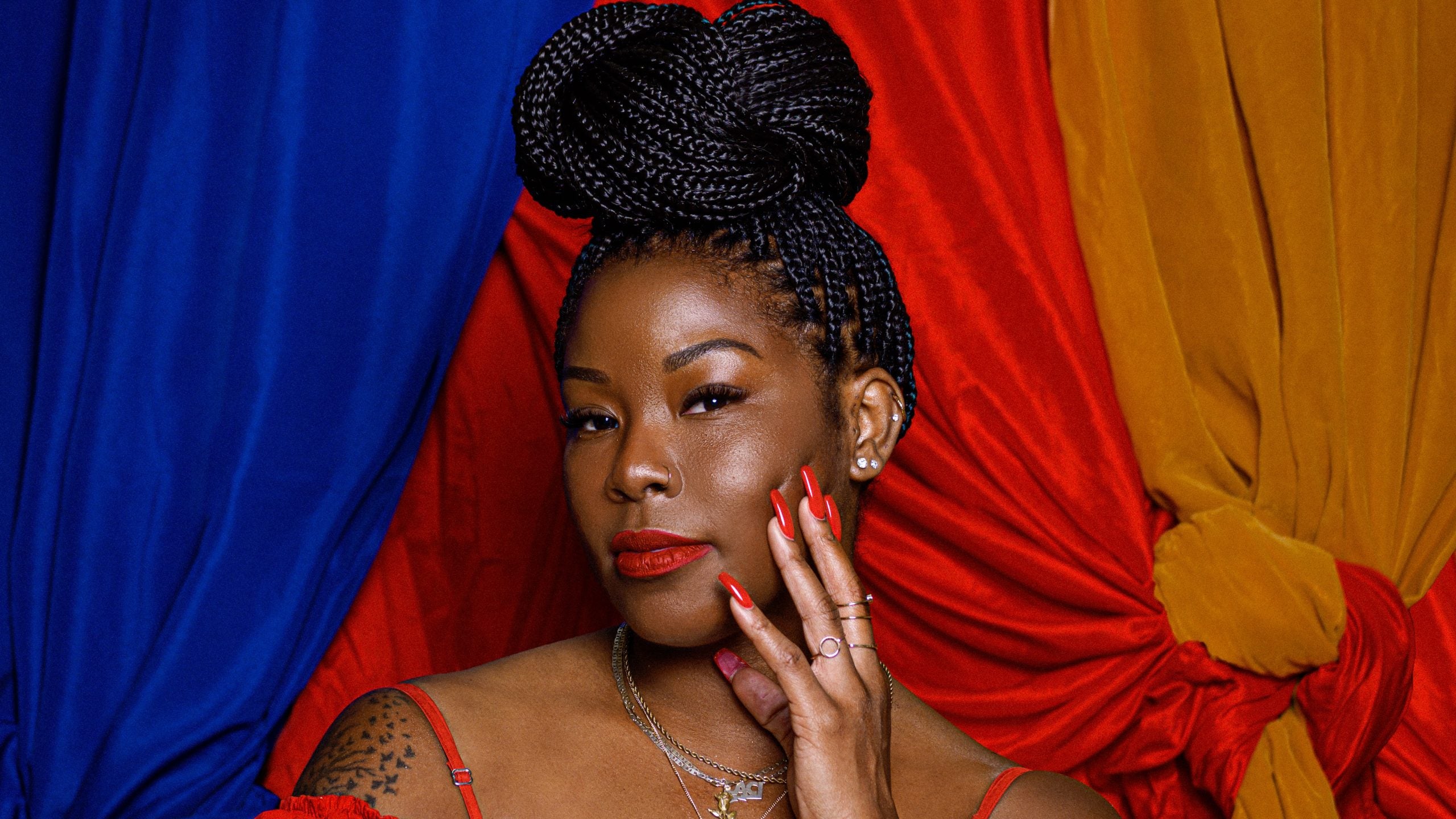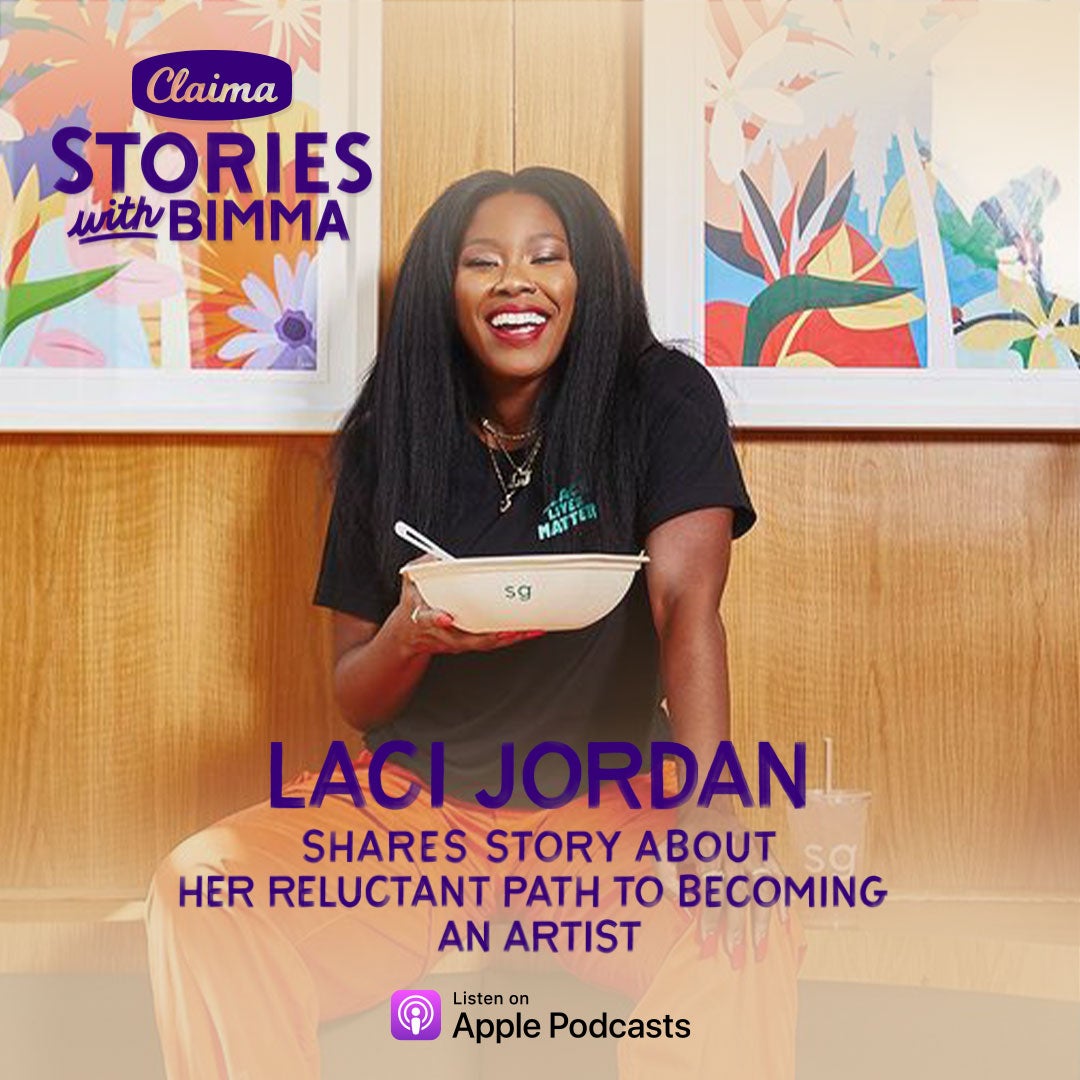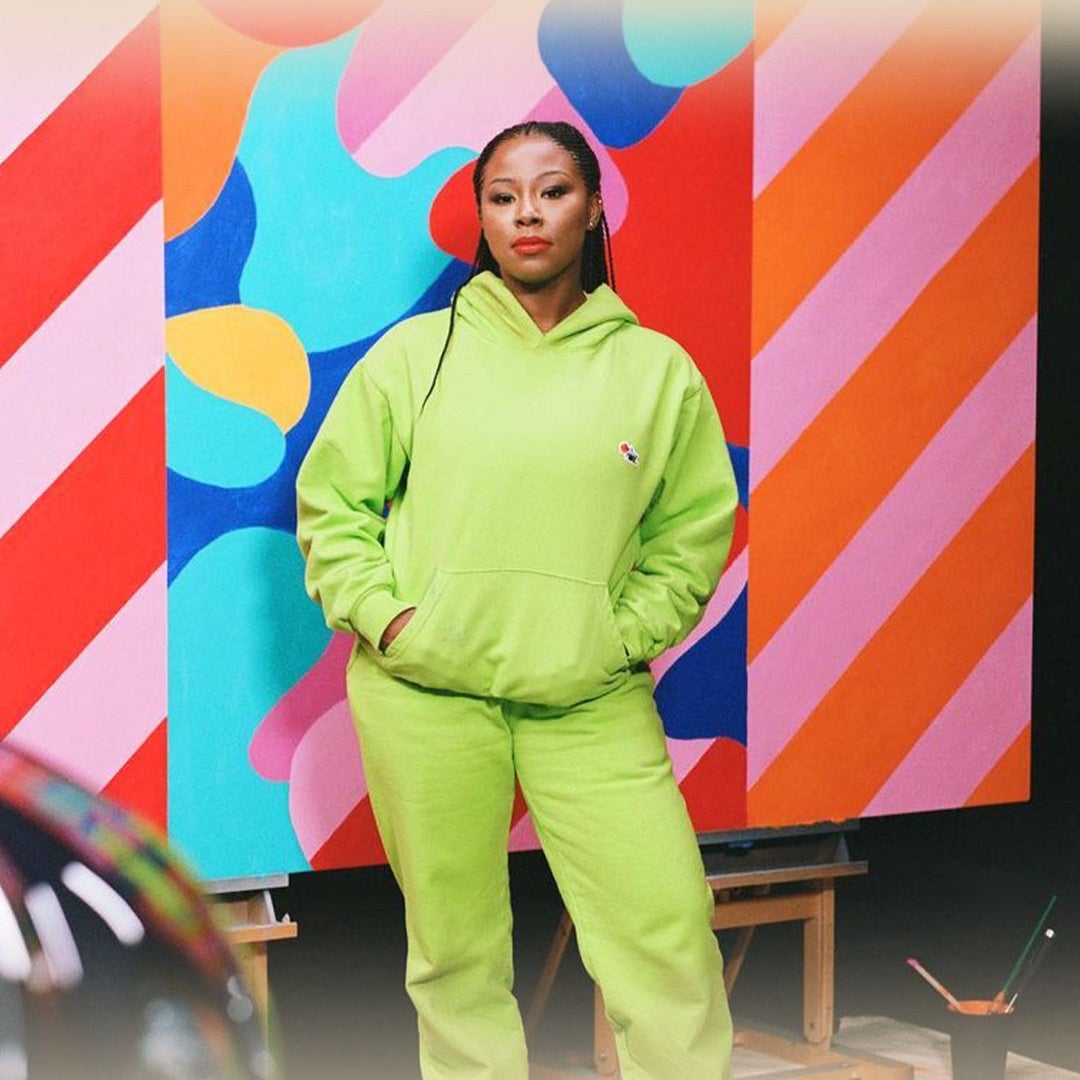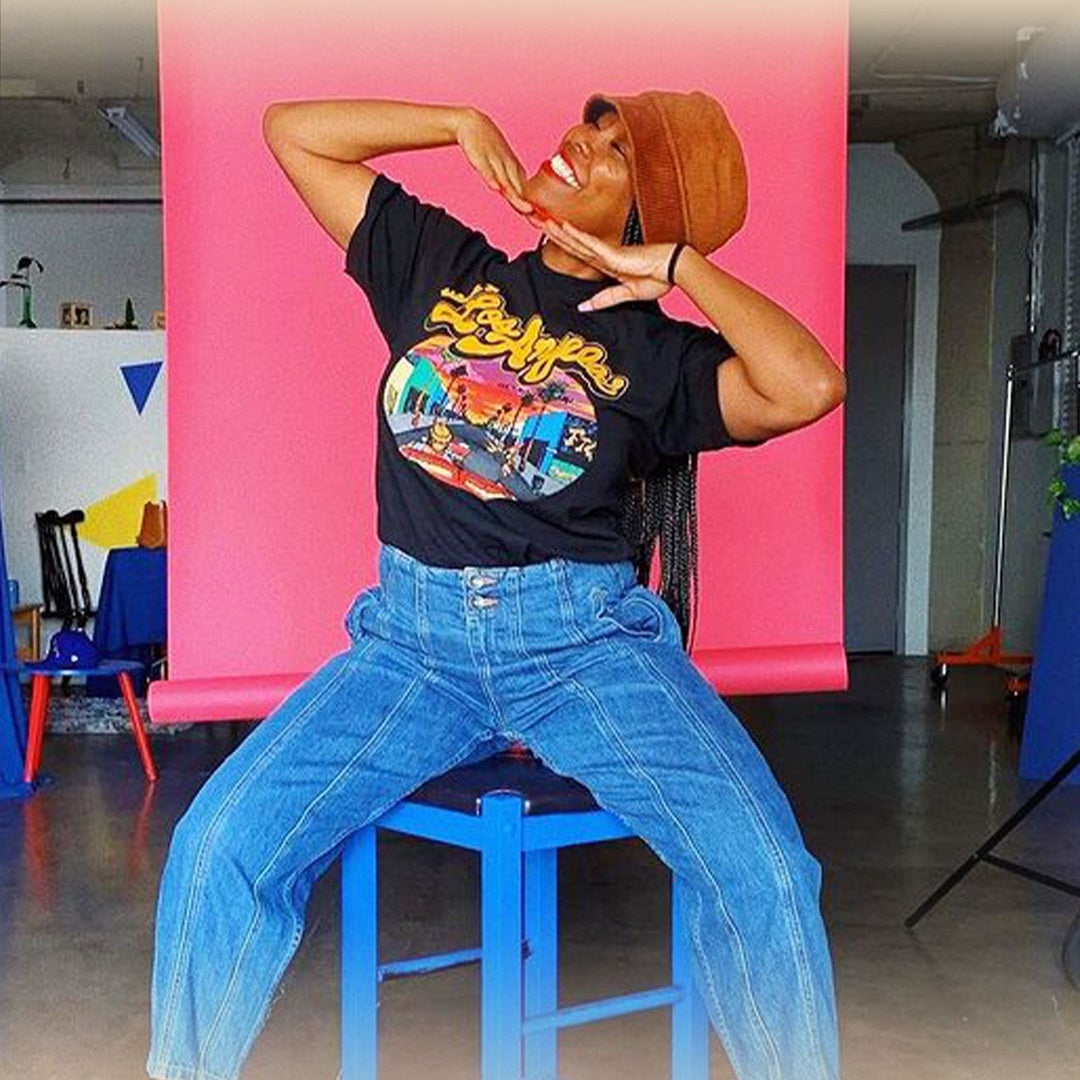
“I didn’t understand the concept then of, ‘They’re hiring me to do what I’m good at’,” Laci Jordan said in her Claima Stories podcast interview. Launched by Former Nike Marketer Bimma Williams, the Claima Stories is a career discovery podcast created as a medium to tell the stories of leading and emerging BIPOC creatives about how they were able to break into their respective industries.
In the podcast opener, the multi-disciplinary creative reflected on the first two rounds of meeting with executives from Michael Jordan and Nike’s Jordan brand and how she was encouraged to not overthink her creative process. Now, the Huntsville, Alabama-born artist is one of the most sought-after artists in the business.
She’s amassed an impressive roster of clients, including: Walt Disney Imagineering, ABC, and Creative Arts Agency. Furthermore, Laci Jordan has collaborated with notable brands such as 21Ninety, SXSW, Tinder, Calvin Klein, United Airlines, Foot Locker, and Planned Parenthood. Additionally, Jordan worked on Ulta and ESSENCE Girls United’s collaborative product launch in 2020.
Learn more about Girls United, ESSENCE’S Gen Z site, here.

Following the premiere of her podcast interview, ESSENCE caught up with Jordan about how she chooses mediums of art to tackle, taking a leap of faith to move from Alabama to Los Angeles and more.
ESSENCE: In addition to working as an illustrator, you’re a talented photographer. When interested in crafting visual art, how do you choose which medium you want to pursue?
Laci Jordan (LJ): I don’t really consider myself a photographer anymore. It’s interesting because I guess I consider myself multidisciplinary, and I think those disciplines weave in and out of flows. It depends on where I’m at and what I’m doing in my life. A lot of those skillsets set me up for running my own business and projects that I’m working on now where I need to know different disciplines.
When I was in my 9 to 5, which I stopped working at in 2018, I was doing a ton of photography work up until that point because it was also a part of my job. Since then, I’ve been more into illustration than anything else. This year, and even before, I’ve been trying to combine and bring forth those different skillsets, but not just limiting myself to illustration, doing products, or creative direction.
ESSENCE: In a previous interview, you described yourself as really quiet and kind of reserved, especially in school settings. When you made the leap from Alabama to California, you had to open up and network a little bit more. How did you make that transition?
LJ: Honestly, it felt like my back was against the wall when I moved here because I was interning but it was on a three-month basis. I knew I needed to be somebody who wasn’t disposable. I needed to know people. I just could easily see what I needed to do. You either got to figure this s–t out now or it’s going to be back to Alabama if you don’t open your mouth and take some coffees before you’re gone.
I say it all the time, but my mom is very extroverted and I think it was only a matter of time before I tapped into that. I was in a position where I didn’t really have time to be scared, even if I need to schedule two coffees a day or whatever it is. I had to pace it out and find my rhythm. I couldn’t just be super extroverted all day; I’d be drained. I guess it was always in me.

ESSENCE: How does color fit into your creative process?
LJ: It’s my favorite part, and that’s the part that comes the easiest to me. I always tell people and tell myself that the things that come easy to you and feel natural are the things that you should be doing.
A lot of the time, even in my sketch phase when I was a sketching illustrator, I always incorporate color from the beginning. It’s funny because a lot of times when I send my work, I’m like, ‘The colors might change. It was just something I put together,’ but I’ll keep working on them and say, ‘No, actually, I think I’ll keep the colors right the first time.’
Watch weekend one of the 2021 Essence Festival segment on entrepreneurial success here.

ESSENCE: Thankfully, you are at a place in your career where you’re being highlighted for the work that you’re doing, but not everyone has that privilege. What can be done to put more of a focus on women like you who are doing the work?
LJ: There’s a lot of people that I hold responsible, myself included. Making sure we’re heard is the hardest part because I’ve been blessed and fortunate enough that even with the 9 to 5 jobs, I’ve had and still get clientele work in those jobs, but it comes from someone saying my name in the room. One thing is not being afraid to speak up and not feeling like you’re taking something away from yourself if you highlight or recommend somebody else.
I don’t turn down anything without recommending somebody unless it’s something trash that nobody should be doing. That’s how you keep the Black dollars circulating, too. There’s a responsibility for platforms to speak out and look for Black artists. I’m making sure I’m recommending people, saying people’s names in the room, and as I grow as an artist, I’m able to bring on and work with different people, pay them what they deserve, and hire people that look like me.